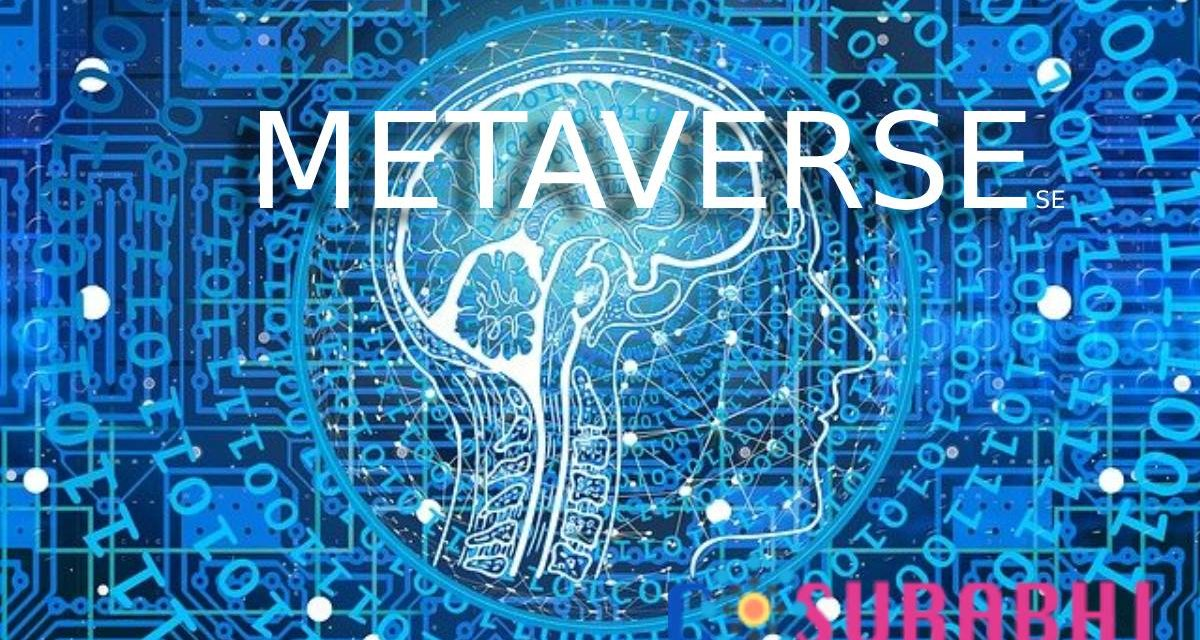The idea of the metaverse is a persistent, online, 3D universe that combines various virtual worlds. It can be compared to an advanced version of the internet. Users will be able to collaborate, interact, socialize, and play together in these 3D spaces thanks to the metaverse.

Although the metaverse isn’t fully realized, some platforms have components that are similar to it. Video games currently provide the closest Metaverse experience available. By holding in-game events and establishing virtual economies, developers have expanded the definition of what a game is.
Cryptocurrencies can be a great fit for a metaverse, though they are not necessary. They make it possible to build a virtual economy with different types of utility tokens and virtual collectibles (NFT). The use of cryptocurrency wallets like Trust Wallet and MetaMask would also be advantageous to the metaverse. Additionally, blockchain technology can offer dependable and transparent governance systems.
Applications that resemble blockchain and the metaverse already exist and give people a living wage. Many users play the play-to-earn game Axie Infinity to supplement their income. SecondLife and Decentraland are two other examples of how blockchain and virtual reality apps can work well together.
What role does cryptocurrency play in the metaverse?
A complete virtual reality cannot be achieved through gaming alone; it only offers the 3D aspect of the metaverse. Cryptocurrencies can offer the other crucial elements that are required, including governance, value transfer, digital ownership proof, and accessibility. However, exactly what do these mean?
We’ll need a safe way to prove ownership if we ever work, socialize, or even buy virtual goods in the metaverse. Additionally, we need to feel secure when moving these things and our money around the metaverse. Finally, if the metaverse will play such a significant role in our lives, we will also want to participate in the decision-making that occurs there.
Some basic solutions are already present in some video games, but many developers prefer to use cryptocurrency and blockchain as better alternatives. In contrast to the more centralized nature of video game development, blockchain offers a decentralized and transparent method of handling the topic

What’s the future of the Metaverse?
One of the loudest advocates for the development of a single metaverse is Facebook. Due to Facebook’s Diem stablecoin project, this is particularly intriguing for a metaverse powered by cryptocurrencies. To support remote work and increase financial opportunities for people in developing nations, Mark Zuckerberg has made it clear that he intends to use a metaverse project. Facebook has a head start in fusing these disparate worlds because it owns social media, communication, and cryptocurrency platforms. Microsoft, Apple, and Google are just a few of the other major tech firms aiming to build a metaverse.
Further integration between NFT marketplaces and 3D virtual universes appears to be the next step in the development of a crypto-powered metaverse. However, there isn’t yet a well-known 3D platform for this. NFT holders can already sell their products from various sources on marketplaces like OpenSea and BakerySwap. On a larger scale, blockchain programmers might create well-liked metaverse-like applications with more natural users than a big tech company.

The Artificial Intelligence Revolution is Underway :
Artificial Intelligence (AI) is intelligence demonstrated by computerized machines that work according to the data and programming they are set with. Read more…
Technologies Used in Metaverse
Generally speaking, the following technologies are employed in the metaverse:
- Hardware: A set of glasses that project a 3D virtual reality image into the users’ field of vision will be the type of hardware used in the metaverse. On the hardware of the metaverse, these glasses create a three-dimensional image. A set of augmented reality glasses or a virtual reality headset like the Oculus Quest 2 could be used. These hardware components play a crucial role in creating an immersive experience for users so they can feel as though they are physically present next to the virtual reality content.
- Software: Among the most potent sets of VR development tools are well-known game engines like Unity, Amazon Sumerian, and Unreal Engine 4 (UE4). They enable the real-time rendering of graphics that users use to experience virtual reality. High-fidelity real-time graphics, as well as creative tools and graphics, can be started using these software tools. All popular VR platforms, including Sony, Oculus, and others, are compatible with them.
We can already see developments that may result in the creation of a single, united metaverse, even though this is probably a long way off. It appears to be yet another futuristic application of blockchain and cryptocurrency technology. Uncertainty exists regarding when we will arrive at the metaverse. However, in the interim, we can already take part in projects that resemble the metaverse and continue to incorporate blockchain more and more into our daily lives.













